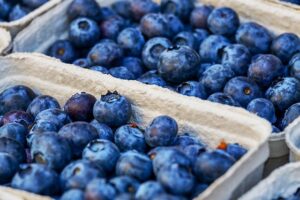Introduction
Carbohydrates are one of the essential macronutrients found in food. They are a primary source of energy for the body and play a crucial role in various biological processes. Understanding the composition of carbohydrates is fundamental in comprehending their role in our diet and overall health. In this article, we will explore the components that make up carbohydrates and gain a deeper understanding of their structure and function.
Monosaccharides
Monosaccharides are the simplest form of carbohydrates. They are single sugar molecules that cannot be further broken down into smaller units. Common examples of monosaccharides include glucose, fructose, and galactose. These sugars have the same molecular formula, C6H12O6, but differ in their arrangement of atoms. Glucose is the primary source of energy for most living organisms, while fructose is commonly found in fruits and honey. Galactose is less abundant but is an important component of lactose, the sugar found in milk.
Disaccharides
Disaccharides are formed when two monosaccharides join together through a chemical reaction known as dehydration synthesis. This reaction involves the removal of a water molecule, resulting in the formation of a covalent bond between the two sugars. Common disaccharides include sucrose, lactose, and maltose.
Sucrose, also known as table sugar, is composed of glucose and fructose. It is commonly found in sugarcane, sugar beets, and various sweetened products. Lactose, found in milk and dairy products, consists of glucose and galactose. Maltose, on the other hand, is composed of two glucose molecules and is often produced during the breakdown of starch.
Polysaccharides
Polysaccharides are complex carbohydrates composed of long chains of monosaccharides. These chains can be branched or unbranched, and their length can vary. Polysaccharides serve as energy storage molecules in plants and animals, as well as structural components in cell walls.
Starch is a common polysaccharide found in plants. It consists of long chains of glucose molecules and serves as a storage form of energy. Starch can be further classified into two types: amylose, which is unbranched, and amylopectin, which is branched.
Glycogen is the storage form of glucose in animals, including humans. It is primarily stored in the liver and muscles and serves as a readily available source of energy. Glycogen is highly branched, allowing for efficient energy release when needed.
Cellulose is another important polysaccharide found in the cell walls of plants. It provides structural support and is composed of long chains of glucose molecules. Unlike starch and glycogen, cellulose cannot be digested by humans due to the lack of specific enzymes.
Conclusion
Carbohydrates are composed of monosaccharides, which are single sugar molecules. These monosaccharides can combine to form disaccharides, such as sucrose, lactose, and maltose. Additionally, monosaccharides can join together to form polysaccharides, such as starch, glycogen, and cellulose. Understanding the composition of carbohydrates is crucial in comprehending their role in our diet and overall health.
References
– National Institutes of Health: www.nih.gov
– Mayo Clinic: www.mayoclinic.org
– Harvard T.H. Chan School of Public Health: www.hsph.harvard.edu












